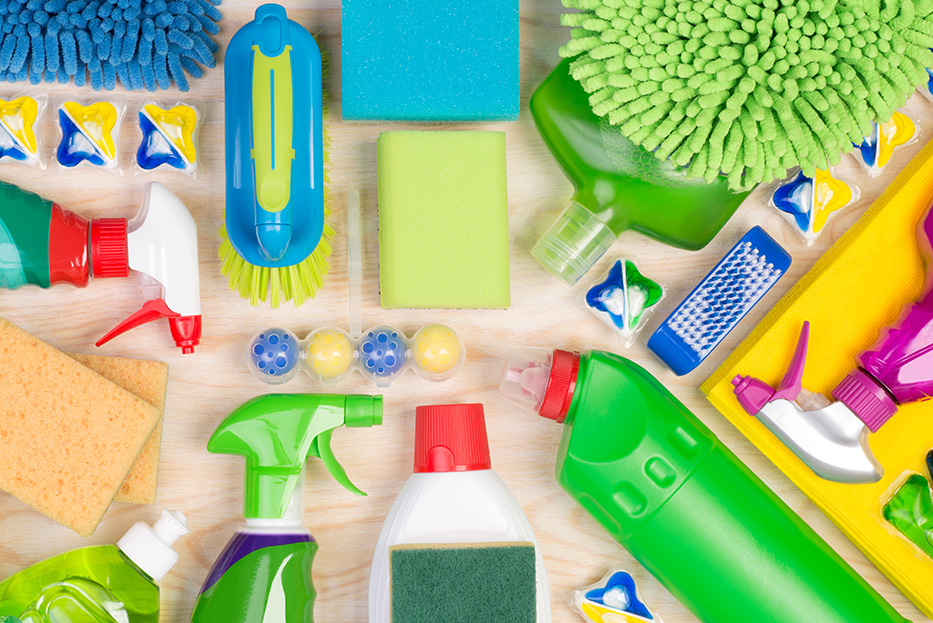The kitchen isn’t just a place to prepare food, it’s a communal space and a place to socialize with friends and family. For such an important space in your home, health and safety are crucial.
Here are some of the most common health hazards found in kitchens and what you can to do avoid them.
Unclean and contaminated materials
When preparing food on countertops or cutting boards, it is easy for residue to be left behind, which can result in bacteria and other harmful substances. The same is true with used sponges. Studies have shown that sponges are an ideal place for E. Coli, Salmonella, viruses, and other pathogens to grow.
When you put something on that surface or use a sponge on food items, dishes, countertops, your phone, or your hands, the harmful substances left behind can contaminate those items.
Bacteria and other harmful substances can result in foodborne illnesses that can make you and your family sick.
In order to avoid contamination, thorough and consistent cleaning is crucial. Clean and sanitize your kitchen surfaces consistently, including countertops, inside your fridge, and your hands.
Be sure to clean your cutting board thoroughly between each use, especially if you are preparing raw meat. Having two separate cutting boards, one for meat and one for other foods, is recommended.
Mold
Since mold often grows in warm and damp areas, the Environmental Protection Agency warns that this can lead to mold in areas such as walls and cabinets.
According to the EPA, mold can lead to allergic reactions, sneezing, red/itchy eyes, throat and lung irritation, asthma attacks, and wheezing.
To avoid this, be sure to check your pipes regularly. If they are leaky or if there is water damage, seek professional help.
If you already have mold, you have a couple of options. The EPA suggests scrubbing the mold off of hard surfaces with detergent and water. Softer more porous materials like rugs and ceiling tiles should be thrown away. Professionals can also be hired, especially if you believe your water or air circulation systems have been contaminated.
Toxic gas
If you have a gas stove, this is especially pertinent. Cooking with gas can release carbon monoxide, a toxic gas, into the air. This odorless, invisible gas can lead to nausea, dizziness, fainting, and even death when the levels are extremely high.
A carbon monoxide detector will alert you when carbon monoxide levels are dangerously high so you can vacate the home, but be sure to have your stove inspected regularly to make sure it is not leaking large amounts of carbon monoxide.
Besides carbon monoxide, fumes can be released during cooking and cleaning from smoke, burning grease, and even cleaning products.
Air purifiers can help cleanse the air of these harmful fumes. Also, keeping plants in your home is recommended because they absorb toxins and release clean oxygen into the air.
Equipment safety
According to nonprofit organization Consumer Reports, cooking fires are the leading cause of injuries in the home and kitchen.
The National Fire Protection Agency reports that 480 people die each year as a result of kitchen fires, and 46 percent of all home fires are the result of cooking. The NFPA further reports that unattended cooking is the number one cause of kitchen fires, so remaining in the kitchen while you have food on the stove or in the oven is recommended.
Also, keeping a fire extinguisher handy is always a good idea.
Knife injuries, as well as accidents with cookware, food processors, microwaves, and blenders are also known to cause injuries in the kitchen.
Be extremely careful when using knives, as they cause more injuries than any other of hand-held tool. Make sure they are sharp – dull knives lead to more injuries than sharp ones. Keeping knives in a knife block, not a drawer, is recommended in order to avoid any accidental cuts.
Implementing and consistently following these simple tips should go some way to improving the safety conditions of your kitchen.
This post was written for Realty Executives by Elliot Walsh.

